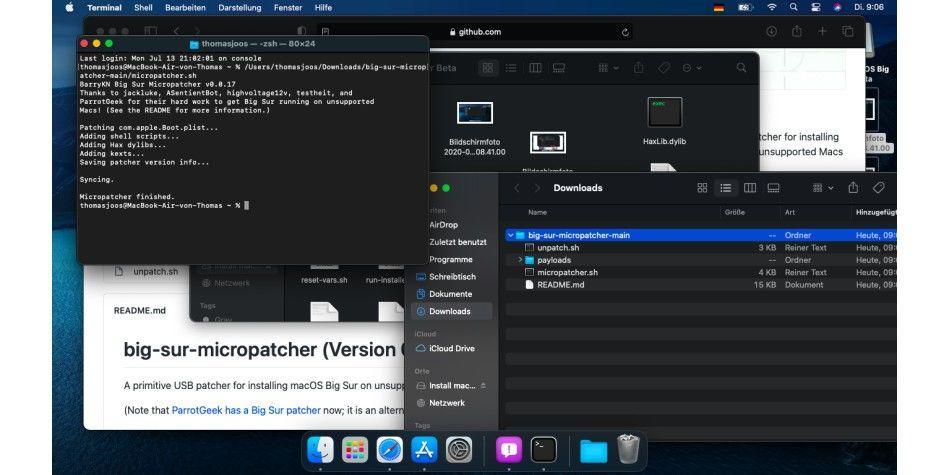

- Install linux on mac mini 2009 install#
- Install linux on mac mini 2009 password#
- Install linux on mac mini 2009 Pc#
# the max size of the data folder (in Kb) # directory for time machine data on server You simply add it to the end nf when finished (and save). You can copy my sample configuration exerpt below, editing it to suit your setup. You can do it in the command line with: sudo nano /etc/netatalk/afp.conf Open the existing afp.conf configuration file for editing that is stored in/etc/netatalk/.
Install linux on mac mini 2009 password#
You'll also need to set the password for this user. Sudo chown -R timemachine:timemachine /data/timemachine sudo adduser -home /data/timemachine timemachine I've chosen to create a user timemachine, but you can pick anything you like. Create one and assign it the previously-created data folder as its home directory and assign ownership of that directory to this user. You'll also need Time Machine user account on your server which you can log in with on your Mac. I'll be using /data/timemachine/ for these instructions, if you prefer another location remember to change it in any of the following. Part 2: Getting Time Machine Working within Linux Host ( Source)įirst you need to pick a directory on your server for your Time Machine data and if it doesn't already exist, create it You will insert the CD/DVD, run through the setup to take the entire partition of the Mac Mini, and once you reach a desktop, you're ready for part 2.
Install linux on mac mini 2009 install#
This is done the same way any other Linux install is done. Part 1: Install Ubuntu 16.04 Server.ĭownload this. The legacy BIOS used to boot Linux requires a monitor to be attached, but there are some workarounds.Alright, I see you've added some requisites to your answer. If you intend to run the Mac Mini headless with Linux, you’re going to run into a problem. My Mac Mini went through about 10-20 seconds of wild screen flickering from grey to black to grey to black but then I saw the familiar Fedora framebuffer. At this point, you should be ready to go for hands-off booting.

Reboot again while holding Eject (or F12) to get the OS X disc out of the drive. Just “bless” the partition to make it valid for booting: If you did one giant partition, this should be /dev/disk0s1. Once you’re in the terminal, run diskutil list to figure out which partition is your boot partition. Pop in the OS X install disc (may need to reboot again to get it to boot) and open a terminal once the install disc fully boots.
Install linux on mac mini 2009 Pc#
Reboot again, but hold down the Eject key (or F12 on PC keyboards) during boot to eject the refit disc. It might say that your GPT partition is empty - that’s okay. When refit appears, choose the second icon from the left in the bottom row and press enter. Reboot the Mini again while holding Option (or alt key) and choose the disc again at bootup. I generally put everything in one giant partition as it makes the “bless” step a little easier later on.Įject the Linux CD/DVD once the installation is complete and toss in the refit CD that you burned previously. When you’re done with parted in that terminal, switch back to anaconda with CTRL-ALT-F6.Īt this point, you shouldn’t have any partitions on your disk and you’ll be ready to install your Linux distribution normally. If you’re using an anaconda-based installation, you can get to a root shell by pressing CTRL-ALT-F2. This will instantly erase the hard drive - make sure you’re ready for this step. Hop into a terminal, start parted on your main hard disk and type mklabel msdos. When I installed Fedora, I had to switch the hard drive’s partition table from GPT to a plain old “msdos” partition table. The boot screen might say “Windows” for the Linux CD/DVD, but choose it anyway. While it’s rebooting, hold down the Option key (alt key if you’re using a PC keyboard) and you’ll have the option to boot from the disc when it boots up. Put your Linux CD/DVD in the drive and reboot. It’s really difficult to get this done properly outside of OS X, so take the time to do it now. This will get rid of the Mac chime on bootup.

To get started, you’ll need a few things: After reading the title of this post, you might wonder “Why would someone pay for a Mac Mini and then not use OS X with it?” Well, if you have a somewhat older Mac Mini you want to use as a server with Linux, these instructions will come in handy.


 0 kommentar(er)
0 kommentar(er)
